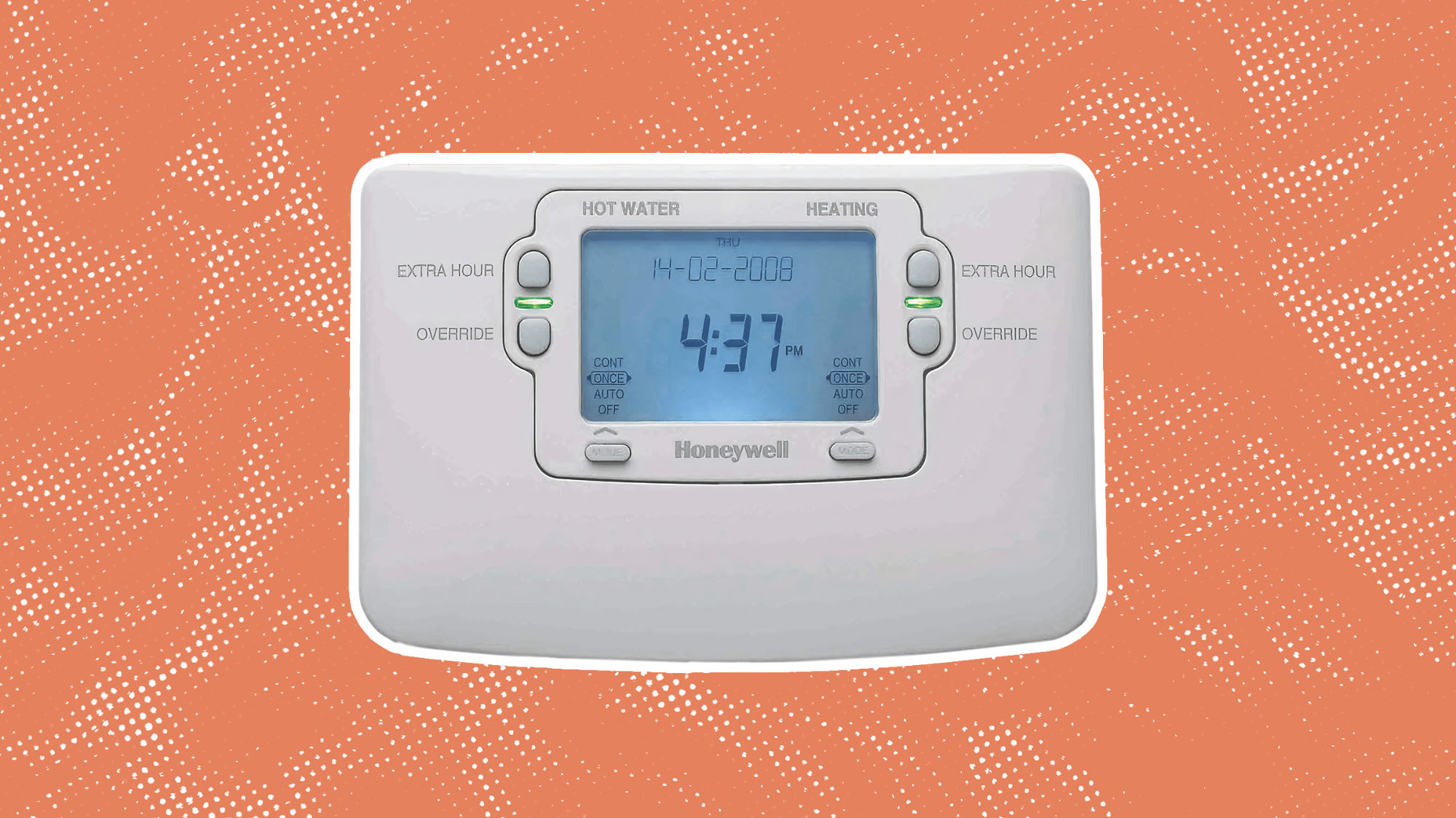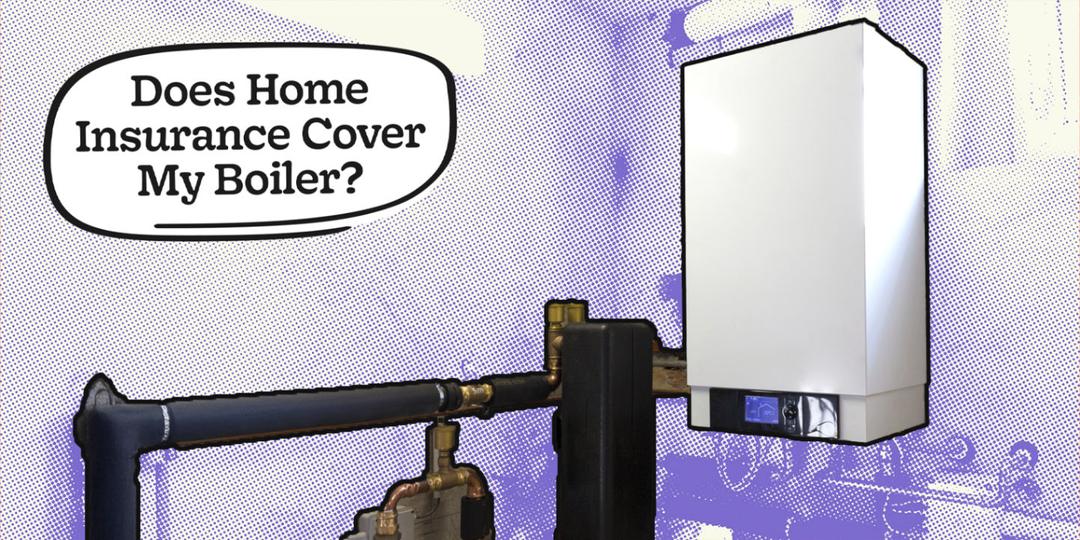Have your boiler and thermostat stopped communicating? Here we explore the most common causes and solutions.
If you’ve found that your thermostat and boiler have suddenly stopped communicating, you may feel a bit lost as to why this has happened.
In today’s guide, we’ll look at why a thermostat and boiler may stop communicating, exploring issues specific to each while also delving into a range of potential solutions.
Let’s begin!
Boiler old, unreliable and costing a fortune in repairs? Simply answer these questions, get your fixed price and you could get a new one installed as quick as tomorrow.
Before we look at the issues that may arise with a thermostat and then with a boiler which can lead to communication issues, it’s important to understand how exactly a thermostat-boiler relationship works.
A thermostat is a heating control system designed to provide users with greater command over the heating system.
How exactly a thermostat and boiler communicate will depend on the setup.
In the case of an older thermostat, it may be directly connected to the boiler with cabling.
However, in the case of a wireless thermostat, a receiver is attached to the boiler, enabling it to receive commands from the thermostat.

This is achieved wirelessly with radio waves.
Either way, upon inputting your instructions into a thermostat, these commands will then be communicated to the boiler to ensure that the settings you’ve chosen are acted upon in reality.
The complexity of communications between a thermostat and boiler will depend on how advanced the thermostat and boiler are and whether or not they used an advanced digital language such as OpenTherm.
This digital language can improve the energy efficiency of your boiler as it can make adjustments based on the external weather.
Why is My Thermostat Not Communicating with My Boiler?
Note: While it’s worth trying out the potential DIY fixes discussed here, if none of these steps works or if you realise what the issue is but the fix is not suitable for a DIYer, you must hire a qualified professional.
First and foremost, you may or may not be able to tell at first glance whether the issue lies with your thermostat or boiler.
So, be sure to keep an open mind as to whether the thermostat or boiler is at fault.
However, we’ll be starting with a look at the various reasons why your thermostat may stop communicating with your boiler.
Your Thermostat Is Off or Needs New Batteries
DIY-friendly Fixes? Yes
For starters, while unlikely, the solutions may be staring you in the face. We all have a tendency to occasionally overlook the obvious.
So, be sure to double-check that your thermostat is on and appears to be functioning as normal.
Even if everything looks good on the surface, another DIY step worth taking is to replace your thermostat’s batteries.
In general, we suggest replacing your thermostat’s batteries once every six months or as often as your manufacturer’s guide recommends.
Related thermostat reading:
The Interior of Your Thermostat Needs Cleaning
DIY-friendly fixes? Yes
Here’s a potential DIY fix that you shouldn’t brush aside (pun very much intended).
Since debris can gather on the inside of a thermostat over time (which can in turn harm your thermostat’s ability to function), it’s worth giving the interior control panel a quick brush.
With that said, if you notice that there is extensive debris-related damage inside, then your thermostat will likely need replacing.
Your Thermostat Needs to Be Relocated
DIY-friendly fixes? Yes and No
In order for your thermostat to do its job properly, it must be located in a suitable spot.
Otherwise, various forms of interference may hinder, if not entirely prevent its capacity to read the room temperature.
While reading the room may be a handy social skill for a human to have, it’s simply a pure necessity for a thermostat to function!
If your thermostat cannot tell what temperature it is, it won’t be able to execute your commands.
Examples of interference that may prevent a thermostat from accurately measuring the room temperature include temperature extremes, nearby electrical equipment, direct sunlight and draughts.
As for the last point, draughts are more likely to occur if the room in question isn’t well insulated.
Whether or not you move a thermostat DIY will depend on what type of thermostat you have and what the manufacturer’s instructions say.
If you have a wireless thermostat, check the instructions and see what the manufacturer advises.
If they confirm that it is okay to relocate it yourself, be sure to follow the steps they lay out to a T.
On the other hand, if you have a wired thermostat, you’ll need to hire a professional to have it relocated.
This is, of course, because removing a wired thermostat from one location and adding it to another includes working with electrics.
You may be interested in Gas Engineer Allen Hart explaining the most common boiler problems and how you can resolve them in the video below:
You Have Unknowingly Given Your Thermostat Incorrect Commands
DIY-friendly fixes? Yes
If you still can’t figure out what’s wrong with your thermostat, you should take a look at the instructions you’ve inputted into your thermostat and the various settings featured on the device.
There are many ways that a user can accidentally set a thermostat in such a way that it will appear as if it is not working as you’ve commanded.
For one, it’s possible that you’ve added your heating preferences into the hot water schedule rather than the heating schedule or vice versa.
Alternatively, you may have unintentionally set the temperature to too low a degree, such that your heating is not warming up to the level you expected.
We recommend having the manufacturer’s manual on hand while going through the settings on your thermostat. With a bit of luck, it may turn out that a simple incorrect setting is the only issue.
Related thermostat guides:
Other Potential Explanations
Additional reasons why a thermostat may stop communicating with a boiler include:
If you have a wired thermostat, there may be a problem with its wiring (e.g., a damaged component or incorrectly wired)
Your thermostat is worn out and needs to be replaced
Why is My Boiler Not Responding to My Thermostat’s Commands?
When a thermostat and boiler fail to communicate, it’s usually down to a problem with the thermostat.
However, there are several scenarios where the boiler or its receiver is to blame.
Your Boiler is Turned Off or/and Has a Fault Code
DIY-friendly fixes? No
Just as it’s worth making certain that your thermostat is on and working as normal, you should confirm that the same is true of your boiler.
If there is a fault with your boiler it should lock out, preventing it from working until the problem is fixed.
The ability of a boiler to lock out is a built-in safety feature to ensure that when an issue arises, it is not allowed to worsen to the point of posing a danger to the occupants of the property.
There are countless reasons why a boiler may experience a fault code and lockout. Some of the more well-known examples include low water pressure, boiler fan fault, flame loss, outside sensor fault and a faulty printed circuit board (PCB).
Your Boiler Needs to be replaced
DIY-friendly fixes? No
To expand on the above point, while fixing a fault code will generally involve at most some repair work or the replacement of one or a few components, there’s a small chance that your boiler is on its last legs.
If you have an old boiler, it may be worn down to the point of being beyond economic repair and thus will need replacing.
While a new boiler installation would be expensive if paid upfront, nowadays it is possible to purchase a boiler on finance.
The Thermostat Receiver is Faulty
DIY-friendly fixes? No
While your thermostat may be working perfectly fine, if the receiver has a fault, then it will not be possible for your boiler to receive any commands.
In the scenario that the receiver is faulty, it will either be the case it needs to be repaired or it may need replacing. It will simply depend on the extent and nature of the fault.
Cost of Hiring a Professional to Fix a Thermostat-Boiler Communication Problem
First and foremost, the labour cost involved would likely land between £30 and £60 per hour if hiring a heating engineer.
A similar rate would apply if you’re looking to hire an electrician. It should be noted that labour prices differ from region to region across the UK.
On top of the cost of labour, many of the jobs listed below also include added supply costs (e.g., for replacing a thermostat, you’d obviously also need to pay for the new thermostat unit).
Here are the costs of a professional fixing a thermostat-boiler communication problem:
Fixing a simple thermostat issue (e.g., cleaning the inside of the device) - £30 to £60
Relocating a thermostat - £30 to £120
Solving a problem with your thermostat’s wiring - £30 to £180
Replacing a thermostat - £150 to £440
Repairing a thermostat receiver - £30 to £120
Replacing a thermostat receiver - £50 to £170
Fixing a faulty boiler PCB - £60 to £240
New PCB for boiler - £490 to £800
Fixing a boiler error code - Far too dependent on the specific issue and error
Replacing an entire boiler - £800 to £2,800
Looking for a great deal on a new boiler?
If so, get your boiler replacement installed with Heatable. Here’s why:
Gas Safe installation within 24 hours.
Thousands of happy customers – an average score of 4.9 on Trustpilot (that’s better than the market leader).
Heatable is a Which Trusted Trader.
Price match guarantee – if you find a cheaper quote, we will match (must be like for like).
Multiple payment options - interest-free available.
10-year guarantee.
Fixed price guarantee – no hidden costs.
Save your quote until later.
Use this clickable form to get a fixed price on the screen instantly.
Heat happy.





